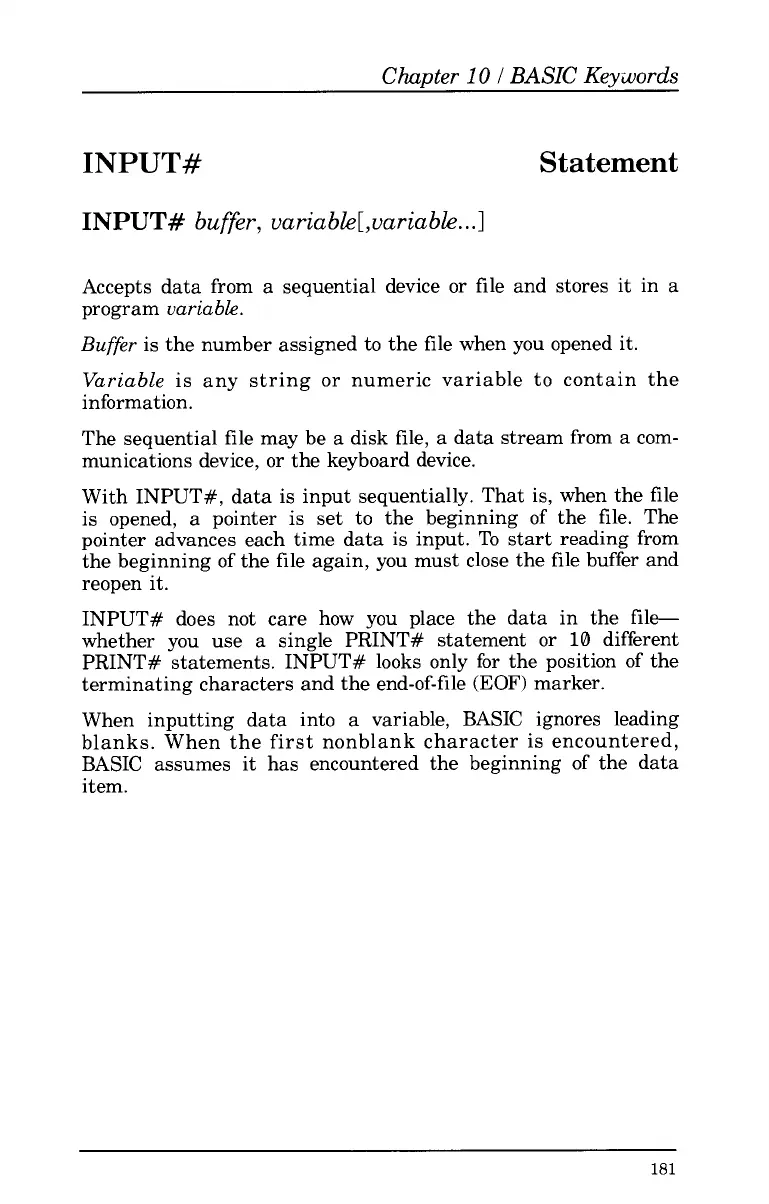Chawter
10
I
BASIC Kevioords
INPUT#
Statement
INPUT#
buffer,
variable[,variable..
.I
Accepts data from
a
sequential device
or
file and stores it in a
program
variable.
Buffer
is the number assigned to the file when you opened it.
Variable
is any string or numeric variable to contain the
in
for
mat ion.
The sequential file may be a disk file, a data stream from a com-
munications device, or the keyboard device.
With INPUT#, data is input sequentially. That is, when the file
is opened,
a
pointer is set to the beginning
of
the file. The
pointer advances each time data is input.
To
start reading from
the beginning
of
the file again, you must close the file buffer and
reopen it.
INPUT# does not care how you place the data in the file-
whether you use a single PRINT# statement
or
10
different
PRINT# statements. INPUT# looks only
for
the position
of
the
terminating characters and the end-of-file
(EOF)
marker.
When inputting data into a variable, BASIC ignores leading
blanks. When the first nonblank character is encountered,
BASIC assumes it has encountered the beginning
of
the data
item.
181
